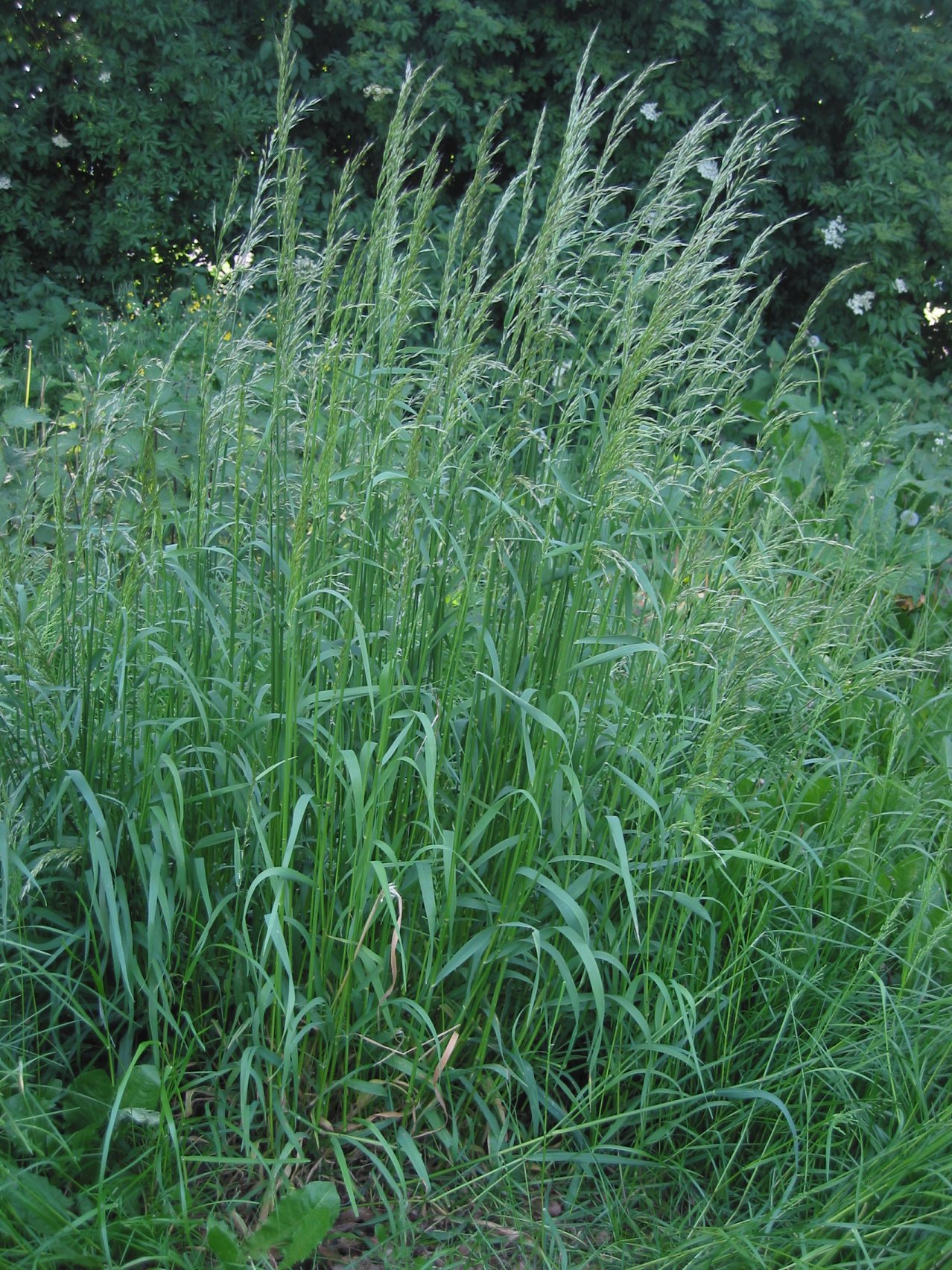Bulbous oat grass, also High ryegrass, (Arrhenatherum elatius) is a fodder crop related to perennial cereal grasses.

Source: commons.wikimedia.org©Rasbak (CC BY-SA 3.0)
Economic importance
High ryegrass hay has good fodder qualities, has a somewhat bitter taste, but has not received wide distribution in agricultural production. Animals in its pure form are eaten satisfactorily, mixed with other herbs – well.
High ryegrass is characterized by rapid growth, precocity, high productivity, blooms early, hay becomes coarse when harvested late. It grows well after mowing, under favorable conditions it can give 2-3 mowings per hay. It is not usually used for livestock grazing.
It is a plant of a temperate climate, in the forest-steppe zone it surpasses meadow timothy grass and meadow fescue in productivity.
It can be cultivated in field and fodder crop rotations as part of hay and hay-pasture grass mixtures. In mixtures with legumes, the best components are alfalfa, sandy sainfoin and vicoleaf.
When used early, it gives a fodder mass containing 11-12% protein, compared to other grasses, the content of carotene is 2 times less.
100 kg of hay contains 59 feed units and 3.5 kg of digestible protein.
It is considered a good component of grass mixtures for tinning beams and hollows. A grass mixture including alfalfa, sainfoin, awnless brome and high ryegrass is used to improve sloping lands.
Crop history
High ryegrass began to be cultivated in Russia at the end of the 19th century.
Cultivation areas
It is cultivated in the regions of the forest-steppe zone and in the North Caucasus.
Yield
Gives high yields in the second year of life, hay 6-8 t/ha, seeds 200-800 kg/ha.
Botanical description
High ryegrass (Arrenatherum elatius J. et C. Presl) is a perennial (juvenile) cereal plant of a top loose bush type.
The root system is fibrous, well developed, penetrates the soil to a depth of 280 cm.
Stems articulated-rising, hollow, erect, smooth, 80-170 cm high.
The leaves are narrow, up to 7 mm wide, up to 30 cm long.
Inflorescence -loose, spreading, branched panicle, 16-22 cm long. Two-flowered spikelets 7-8 mm long.
The fruit is light green. Weight of 1000 seeds 2.7-3.4 g.
Biological features
In cold winters with little snow cover, high ryegrass freezes, leading to thinning of crops or complete loss from herbage. It does not tolerate spring frosts, especially late ones.
Drought resistance is low. Does not tolerate high temperatures well.
Moderately demanding on moisture, prefers soils with medium moisture.
Does not tolerate close groundwater and flooding. Prefers chernozems, loose soils with a high content of organic matter. It grows well on loamy, sandy, podzolic and other soils with a permeable subsoil. Waterlogged, compacted soils are unsuitable.
Vegetation
With coverless crops, it can produce hay in the first year of life. It remains in the herbage for 4-5 years.
Under cover, plants reach full development in the second year of life. After germination, it grows faster than other cereal grasses, with sufficient moisture it can be cut even with undercover sowing, and without a cover it can bloom by the end of summer.
In grass mixtures for 3-5 years of life begins to fall out.
The type of development is spring.
Sowing
It is sown in early spring in a mixture with other herbs under cover or without cover. In a mixture with perennial leguminous grasses, it is usually sown under the cover of spring crops with grain-grass seeders between the rows of the cover crop.
The seeding rate in pure sowing, for example, for seed purposes, in a row method is 15-16 kg/ha, in a wide-row method 8-9 kg/ha, in grass mixtures 8-12 kg/ha. Sowing depth 2-3 cm.
Harvest
Harvesting for hay is started at the beginning of the panicle.
Harvesting for seeds is started in the phase of wax ripeness in a separate way.
Sources
Crop production / P.P. Vavilov, V.V. Gritsenko, V.S. Kuznetsov and others; Ed. P.P. Vavilov. – 5th ed., revised. and additional – M.: Agropromizdat, 1986. – 512 p.: ill. – (Textbook and textbooks for higher educational institutions).
V.V. Kolomeichenko. Crop production / Textbook. — M.: Agrobusinesscenter, 2007. — 600 p. ISBN 978-5-902792-11-6.
Fundamentals of agricultural production technology. Agriculture and crop production. Ed. V.S. Niklyaev. – M .: “Epic”, 2000. – 555 p.